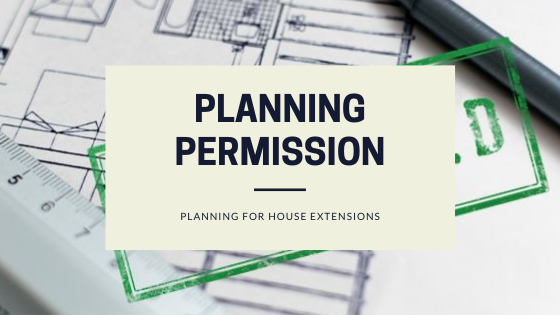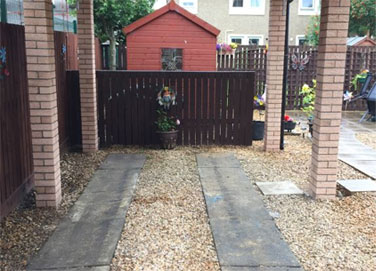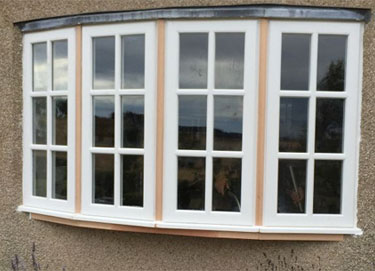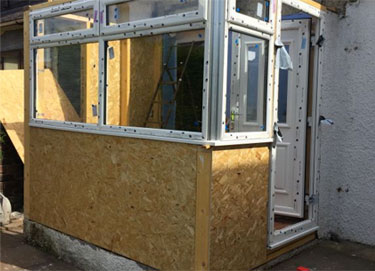What is planning permission, when do you need it, and how do get it? This guide explains all, including costs and what to do if you are refused
Planning Permission, in simple terms, is like asking if you can do a certain piece of building work, whether that
It will be granted possibly subject to certain conditions or refused.
It is your responsibility for seeking, or not seeking, planning permission. If required, it should be granted before any work begins.
Planning Permission Introduction
Whether you are building from scratch or wanting to add a substantial extension to your home, securing planning permission from your local authority is an important step.
(You may also need planning permission for smaller home improvements if your home is listed or located in a designated area).
It can be time consuming and stressful, especially if you are looking to build something non-standard, so a sound understanding of what the process involves and a clear idea of what the planners are likely to approve will set you in good stead.
If you are considering a project that needs planning permission, this complete guide covers all you need to know — from when you need planning permission and how much it costs, to whether you should use a planning consultant, through to how long the process should take and what your options are should your application be rejected.
This blog will outline the following:
- What is planning permission?
- How much does it cost?
- How long does planning permission last?
- Types of planning permission
- How long does it take to get approved?
- Planning consultants
- Planning applications
- What to do if you’ve been refused
- Can I build without permission?
What Is Planning Permission
Planning permission is the consent of your local authority on a proposed building project and is in place to deter inappropriate development. The building of a new dwelling, or extensive changes to existing buildings, usually requires planning permission. Planning permission is often the key that turns a piece of agricultural land into a viable building plot.
Decisions on whether to grant planning permission are made in line with national guidance (in the form of the National Planning Policy Framework) and the local planning policies set out by the local authority.
How Much Does a Planning Permission Application Cost?
Since April 2008, all local planning departments use the same application form, known as 1APP, you can find the appropriate form for your area and complete the application process online at the Planning Portal.
As well as fees for pre-application advice, further small sums are payable for the discharge of planning conditions which must be met before development begins.
Also bear in mind that you may need to make more than one planning application in order to reach agreement with the council and make revisions to your plans accordingly (which may involve further architect/designer fees). A minimum budget of around £2,000 (including architects’ plans and specialist reports) is probably realistic for getting planning permission.
How Long Does Planning Permission Last?
All planning permissions automatically expire after a certain period.
Unless your permission says otherwise, you have three years from the date full consent is granted to begin building.
Depending on how soon your consent expires, you may take different steps to get your project started.
If the expiry date is imminent, it may be best to reapply to ensure you have adequate time to plan effectively.
If you have sufficient time to make what is known as a ‘material start’ then it may be best to secure the permission in perpetuity, allowing you the time needed to get started properly.
When Do I Need Planning Permission?
If your project involves the creation of a new dwelling (by either building from scratch or subdividing an existing home), then planning permission is normally required.
Larger outbuildings or extensions, or builds/improvements in Designated Areas or involving listed buildings, are also likely to require planning permission.
Smaller additions and improvements can normally be made under Permitted Development.
Are There Different Types of Planning Permission?
Full Planning Permission
This grants permission for a project with a detailed design. But before going full steam ahead on site, the planning conditions attached to the consent must be discharged.
They must be discharged (satisfied) formally by letter by the local authority, usually before commencing work — otherwise the approval is invalidated.
Outline Planning Permission
This grants permission in principle, but does not include design specifics.
It is important to note that outline planning consent does not provide permission to start work.
An application for ‘reserved matters’ – which may include the size of the proposed house, appearance, position, landscaping and access – will need to be submitted and approved before work can take place.
If your detailed plans deviate significantly from the original outline planning then you’ll likely need to submit for full planning.
Also, if you are keen to start your project quickly, then it makes sense to apply for full planning permission.
How Long Does it Take to Get Planning Permission?
Local authorities are supposed to determine planning applications within 10-12 weeks of registration, and the majority of straightforward householder applications will be dealt with within this time frame.
A sign is posted outside the address relating to the proposed development and any neighbours likely to be affected are written to and invited to view the plans and to comment.
This is known as the public consultation process and it takes three to eight weeks.
The authority will make statutory consultations to the local Highways department, and where necessary the Environment Agency as well as others.
Realistically, if you are having to make more than one application (following revisions or changes to the design), you should consider setting aside 18 months for the process.
What Does a Planning Application Include?
In general terms, your application should include:
- Five copies of application forms
- The signed ownership certificate
- A site plan, block plan, elevations of both the existing and proposed sites,
- A Design and Access Statement
- The correct fee
What’s a Design and Access Statement?
These statements have to accompany all planning applications besides householder building works in unprotected areas and changes of use.
Statements are used to justify a proposal’s design concept and the access to it. The level of detail depends on the scale of the project and its sensitivity.
Most authorities will have guidance notes available to help you but, unfortunately, unless you ensure you have included one in your submission, planning authorities can refuse to register your planning application.
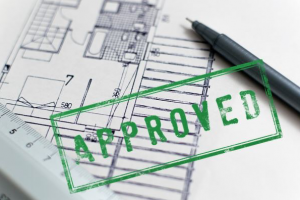
What Factors Affect the Granting of Planning Permission?
The local authority will base its decision on what are known as ‘material considerations’, which can include (but are not limited to):
- Overlooking/loss of privacy
- Loss of light or overshadowing
- Parking
- Highway safety
- Traffic
- Noise
- Impact on listed building and Conservation Area
- Layout and density of building
- Design, appearance and materials
- Government policy
- Disabled access
- Proposals in the development plan
- Previous planning decisions
- Nature conservation
Neighbours will be consulted and invited to comment, but only those objections based on material considerations are taken into account.
If the neighbours do not object and the officers recommend approval, they will usually grant planning permission for a householder application using what are known as delegated powers.
What If Someone Objects?
Like it or not, when you build things, you risk upsetting people.
It may not be rational, but people get very emotional about changes that they fear will affect their home, their view or their property’s value – or even just the street they live on.
So it pays to be polite, to talk to the neighbours and to show them the plans.
If you can accommodate minor changes without undermining your goals then it might be worth doing if it could help avoid local objections.
If there are objections or the application is called into a committee by one of the local councillors, then the decision will be made by a majority vote by the local planning committee.
At the planning meeting, you or your agent will be given an opportunity to address the planning committee, but this time is limited to a maximum of three minutes.
What Happens if I am Refused Planning Permission?
In England around 75% of applications are granted. If your application is rejected, you can either amend and resubmit having dealt with the reasons for refusal, or you can make an appeal to the planning inspectorate.
Around 40% of householder applications that are refused are later granted at appeal.
Can I Build a House Without Planning Permission?
While it is not illegal to develop land without planning permission, it is not lawful and, consequently, if you have failed to get consent for your project, then the local planning authority can take action to have the work altered or demolished. In this instance, you can make a retrospective planning application and if this is refused you can appeal the decision. If you lose, it can prove very costly.
There is a legal loophole: if no enforcement action is taken within four years of completion, the development becomes immune from enforcement action (10 years for a change of use). The development then becomes lawful — but this is too great a risk to take.
Altering a listed building without prior permission is, however, a criminal offence, and in extreme cases it can lead to prosecution and unlimited fines — and even imprisonment. So do ensure you apply for approval first.
Summary – 5 Essential Things to Know About Planning Permission
- You can make a planning application on any price of land in the country and you do not need to own it.
- You planning decision should take no longer than eight weeks from the point of an application.
- The objections of neighbours and local people will impact on the final decision.
- You can withdraw an application at any time and resubmit free of charge.
- You can submit an infinite number of planning applications of any one site.
Get In Contact Today
If you live in Fife, Edinburgh or Tayside and looking to get a quote for some building work that has been granted planning permission then please get in touch with us today.

